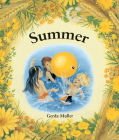Archive for August, 2010
What We’re Reading Now – August
What Anne’s reading
First Things First
The essence of this book is scheduling your priorities (instead of prioritizing your schedule). I’ve been so frustrated with my tendency to not do what I think I want to do. How on earth does not doing things I like make any sense? What would be the advantage of that, even as a defense mechanism learned as a non-rational younger person?
I still haven’t figured out what’s keeping me lazy. I could blame it on the hectic pace of our technological suburban life, but plenty of people work eight hours a day, commute home, and still find the energy to go camping on the weekends. Maybe it’s just inertia. When Mehalia was younger I washed diapers, walked everywhere, went to school full time, worked two part time jobs, and still made time for writing, playing music, and cooking. I guess maybe I’m heavily influenced by my environment.
Anyway, the process of writing down at the end of the week what I’ve been the most stoked to have done, and what I’m really hoping to do, has at least got me in the mindset where I’m looking for opportunities to do the things on my really important list (like going to festivals with my family, laughing and being silly). 
I’m trying to frame my choices in terms of what I want to have done, rather than what I want to do; that’s gotten me out of bed in the morning to take a walk, and into the habit of washing my dishes as soon as I dirty them. I never want to do those things, but I always want to have done them.
I remember talking to a wise friend once about this same struggle, wondering what’s different about the people who actually do the things they say they want to. The difference, she said, is that the people who do things, do things. That’s it. I guess I have been stepping it up lately, but really the pace of the transfer between awareness and action is driving me crazy, especially knowing that nothing is stopping me but me. I guess that should make it easier than fighting some outside force working against me, but I feel like I’ve built a pretty solid invisible wall that’s taking forever to climb over or tunnel under or however I’m approaching it, I’m not even sure – maybe that’s something to think about.
***
What Mehalia’s reading
Zoology – A little field guide sized text I picked up at a garage sale. Not recommended, for its seriously offensive discussion of “the 3 human races.” To paraphrase – they divisions they described were caucasians, mongoloids, and negroids; some consider aboriginal Australians to be a subspecies, australoids. The races are capable of interbreeding, thus proving that they belong to the same species. Ack! Unbelievable. Obviously written in the earlier part of last century, or, it would seem more likely, prior to the colonization of the Americas.
Maybe they included all those peoples in the mongoloid or caucasian classification? I didn’t know whether to laugh at the absurdity of the worldview that created these pages, or cry over the horrible tragedies that have resulted from this kind of thinking. I wanted to laugh, glad it was all in our past, but I just read an article on modern American sweatshops, which I’m sure don’t come close to the deplorable conditions in other places. Although I know racism is still a major concern, it seems to me not quite as blatant in many instances, and the overt disgust has shifted to a classist debate among the wealthy, about the poor, with racial repercussions of economic policy being a hidden agenda. Lucky for the racists, many of the people they despise just happen to be poor, so they can attack them covertly without having to admit their socially unpopular leanings.
Anyway, I was really glad that I had the opportunity to talk about it with her- that it wasn’t something she encountered at school with no contextual discussion. Although I was impressed by her first grade teacher’s choice to fulfill her mandate to teach about the Thanksgiving holiday by doing a unit on the diversity of modern Native Americans in the united states, and studying some of their cultural traditions. I thought maybe the teaching of history had become more multi-faceted than it had been during my schooling. Then last year it was back to pilgrim hats, feather headbands, and plays about turkey dinner. Ugh. I guess I’m not the only one adapting to new levels of awareness at a snail’s pace.
What Zach’s reading

It always amazes me to read older books (Hemingway published A Farewell to Arms in 1929) and realize how little things have changed in the way people think about life, death, war and love. The death rate at the time was obviously higher, beliefs about nationalism were different, and divorce rates weren’t as high, but the underlying thoughts that Hemingway illustrates through the main character are still still so relevant today.
What Edie’s reading
